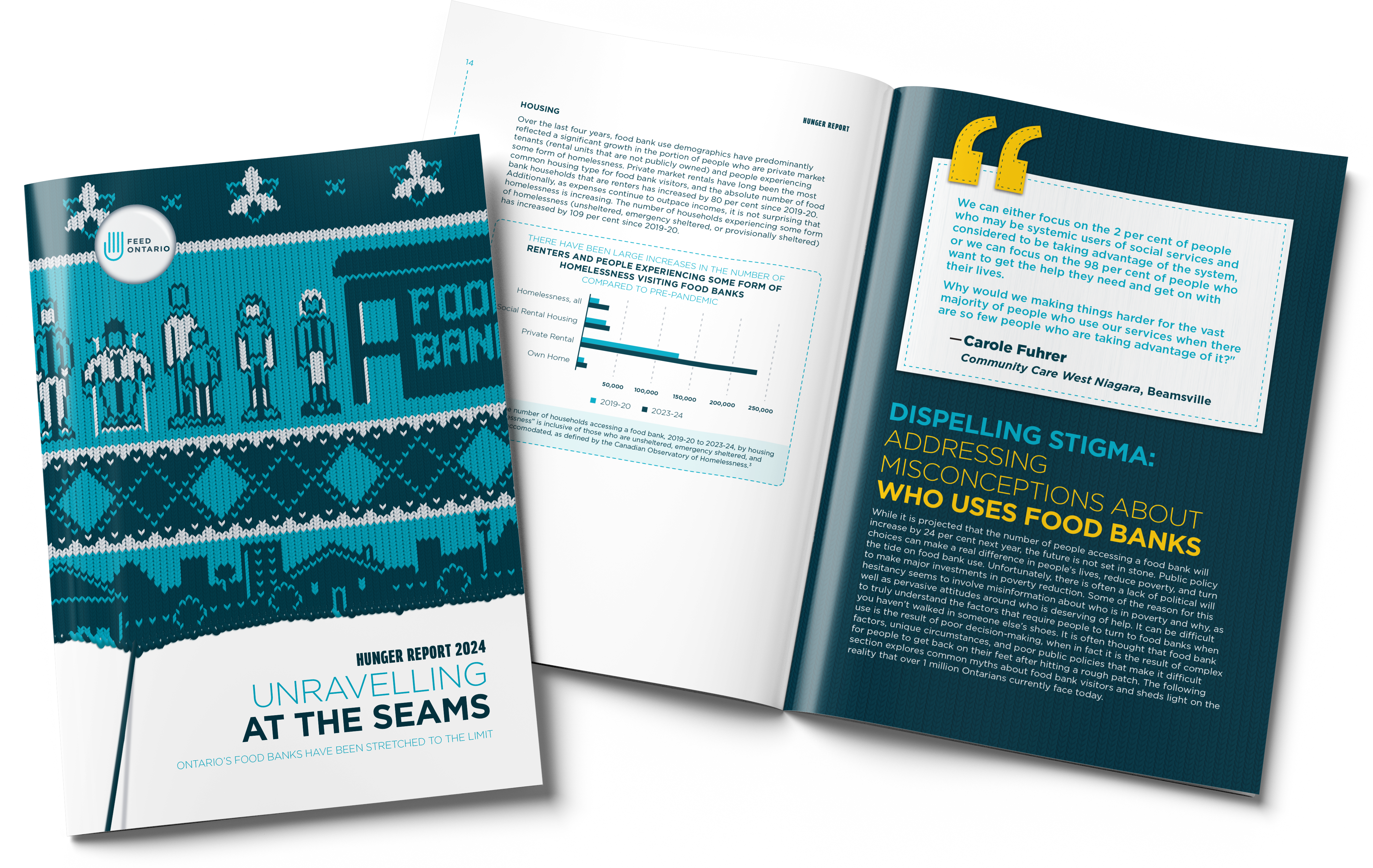Food banks need your help
The affordability crisis is forcing more people to turn to food banks for help, and means fewer Ontarians are able to donate or provide the same level of support as they have in the past. This means food banks are being forced to cut services as surging demand outpaces resources.
Increased pressure is causing food banks to unravel at the seams
38% of food banks have reported having to reduce the amount of food they can give. Half of all food banks that offered wrap-around supports have been forced to cut or reduce programming due to insufficient resources.
People who were once donors are now coming for support
Food banks do not have the resources to adequately meet the level of need in our province. As a result, even with the help of food banks, people and families are going hungry.

There is record-high food bank use across the province
people used a food bank in Ontario between April 1, 2023 and March 31, 2024, a 25% increase over last year and a 86% increase since 2019-2020
of visitors had never accessed a food bank before
visits were made last year, a 31% increase over last year and a 134% increase since 2019-2020
Dispelling myths about food bank visitors
It can be difficult to truly understand the factors that require people to turn to food banks when you haven’t walked in someone else’s shoes.
MYTH: People who use food banks simply need to get a job
Many workers can’t afford the cost of living
Getting a job doesn’t solve poverty. Workers are one of the fastest-growing demographics at Ontario’s food banks, with nearly 1 in 4 food bank visitors citing “employment” as their primary source of income, a 17 per cent increase over last year and a 91 per cent increase compared to pre-pandemic.
MYTH: We already provide plenty of help through government support programs
Government support programs fall far below the cost of living
The maximum amount a single person on Ontario Works can receive from social assistance is $733 per month, an amount that has not changed since 2018. This amount is meant to cover a person’s basic needs as they take part in skill-building activities to help them find and keep a job. However, this is not enough to afford even the average rent for a one-bedroom apartment in 52 out of 53 Ontario cities and towns surveyed, much less food and transportation.
MYTH: People who are using food banks just need to budget better
A dollar can only be stretched so far
It is difficult, if not impossible, to simply budget one’s way out of a cost-of-living crisis. For example, between 2019 and 2022, the average income of the poorest Ontarians decreased by 2 per cent, while the cost of food increased by 14 per cent and the average rent in Ontario increased by 15 per cent.
We need bold action against poverty in Ontario
We cannot keep doing the same thing over and over again and expecting a different result.
One million Ontarians accessing a food bank should be seen as a black mark on all levels of government and a high-water mark that they strive to never reach again, not something to accept or look away from. The growth in economic precarity in our province is not sustainable and points to a lack of resilience in the systems we have put in place to protect people from falling through the cracks.
As we look ahead to Ontario's next Poverty Reduction Strategy, it is crucial that the strategy is a bold plan to address the root causes of poverty and food insecurity.
The strategy should be centered around improving the material conditions of Ontarians. This requires metrics that go beyond income statistics, and a focus on important questions. Are more people able to fill their cupboards and fridges? Do more people have a roof over their head? Are more people accessing the medical care, medicine, and supports they need? And, are the jobs available to Ontarians secure and well-paying? Asking the right questions is crucial: as the adage goes, what gets measured gets managed.
In addition to developing a more robust poverty reduction strategy, the following recommendations are actions that can be taken today and that will provide an immediate benefit to low-income Ontarians in the province.